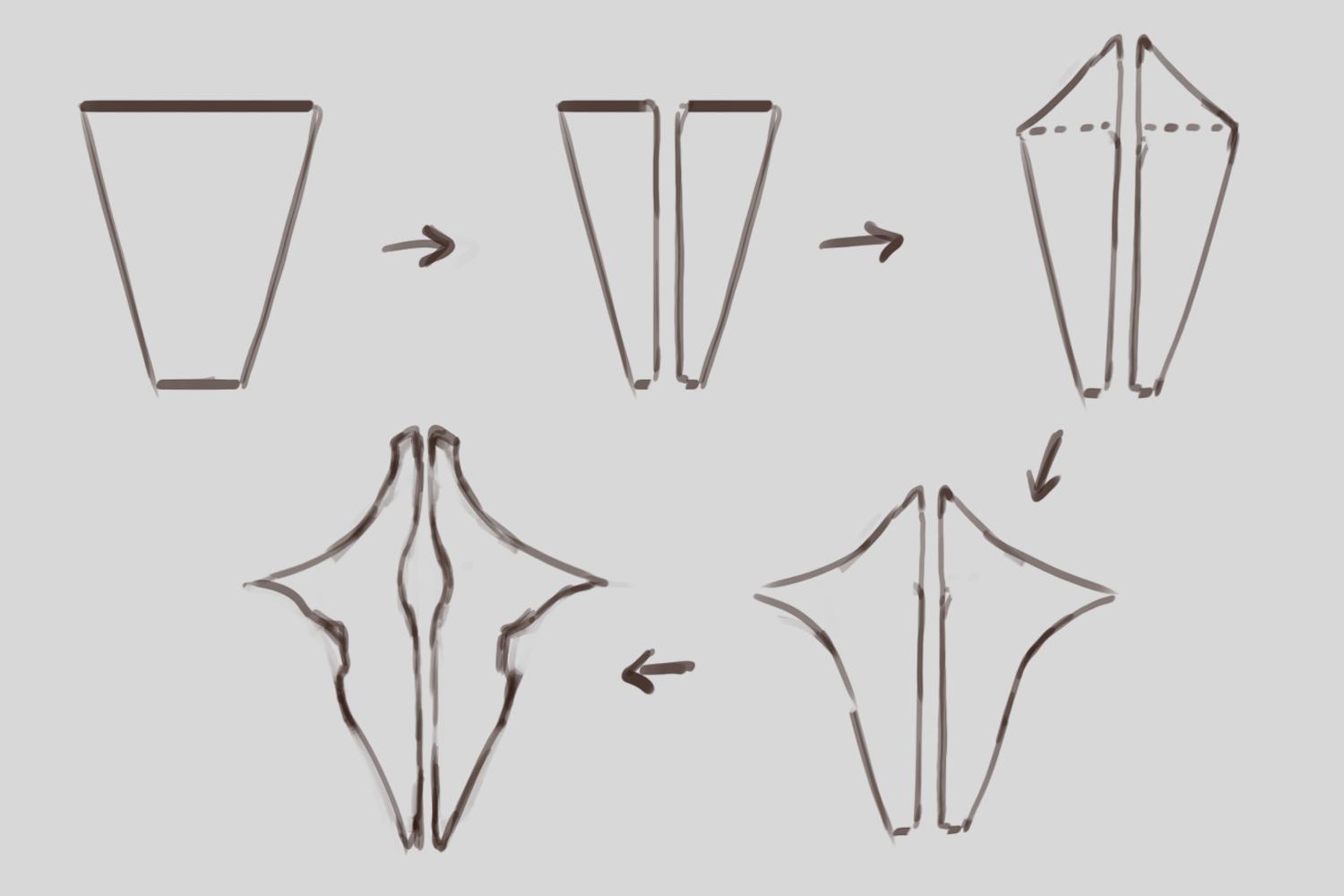Musculus trapezius (xlas)
Preview:
clean, all important angles + additional info (all latin names)
Synonyms: Trapezius muscle; Trapezius; Neck muscle
not final
Summary
The Musculus trapezius is the biggest neck muscle (surface area) we have and very relevant in several head and arm movements. Its name giving shape, the trapezoid, significantly shapes the upper back, especially around the neck and the shoulder blades (scapulae). There are 3 parts to the trapezius (top part, middle part, bottom part) and each one pulls in a slightly different direction.
Visual Introduction
 left: general view (white parts = tendons); right: the 3 parts of the muscle + pull direction
left: general view (white parts = tendons); right: the 3 parts of the muscle + pull direction
 trapezoid shape to Musculus trapezius (easy to remember)
trapezoid shape to Musculus trapezius (easy to remember)
Origin
- Occipital bone (Os occipitale; lower back of the skull)
- Cervical vertebrae (spine, neck part)
- Down to the 12th thoracic vertebra (spine, chest part)
Originating from a vertebra means the tendons connect to the spinous process (little bumps you can feel on your spine) of each vertebra.
Insertion
- Spine of the shoulder blade (Spina scapula)
- Acromion (Pars transversa) = highest part of the shoulder blade
- Clavicle (clavicula)
*insert drawing for insertion and origin*
Ideally in one picture
Viewpoints with simplified shapes
Work with simplified shapes so that other artists can memorize more information.
*insert drawings where the muscle can be seen from different viewpoints*
Functions
- Top part:
- Lifting the shoulder
- Twisting the shoulder blade (scapula)
- Tilting and turning the head, also leaning the head backwards
- Lifting the shoulder
- Middle part:
- Pulling the shoulder back
- Twisting the shoulder blade (scapula)
- Bottom part:
- Pulling the shoulder/shoulder blade (scapula) down
*insert drawings that visualize the functions*
Details
Drawing the trapezius for a woman you should always consider that the subcutaneous fat layer is thicker. This means that bumps and depressions caused by muscles, bones, etc. are less visible on women. Concentrate on the main depression, the corner where the trapezius meets the shoulder blade, and don't go for too many details to make it look convincing. Of course there are exceptions. The same goes for the average man (especially if the body fat is high), focus on the shoulder blade depression.
On many people the trapezius isn't visible at all.
The trapezius is also used when the shoulder blade needs to be pressed against the body, for example in a handstand. Chest muscles (+ serratus anterior) and back muscles, including the trapezius (mostly the middle part) contract at the same time to achieve that.
The rhomboids often contract simultaneously with the trapezius. They pull in a similar direction with the top and middle part of the trapezius and have similar origin and insertion. The bottom part of the trapezius on the other hand pulls down, so its kinda opposite to the rhomboids. The rhomboids are located below the trapezius, so you cannot see them on a person usually. However with very particular shoulder movement both muscles can be visible at the same time - at the very bottom of the trapezius.
The rhomboids are partly causing the middle part of the trapezius to look so big.
There is one vertebra, that sticks out at the center of the trapezius. This is the seventh cervical vertebrae, the last neck vertebra before the thoracic vertebrae start.
What is also important if one wants to study this muscle beyond the basics?
Go over the muscle more in detail and share intermediate up to expert knowledge.
*insert drawings if needed for explanation*
Reference Pictures (for study only)
*insert real life pictures*
Check out this page for resources and explanation
